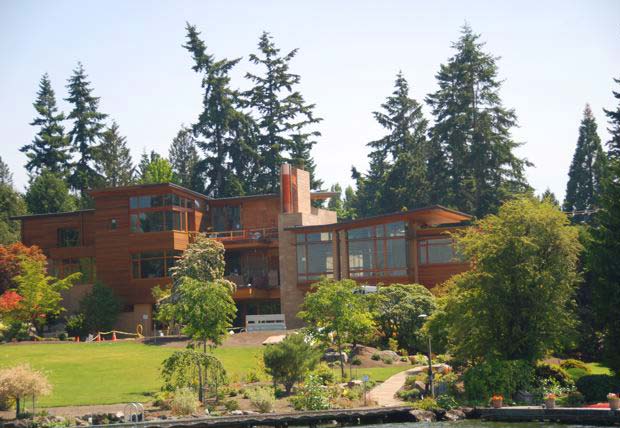Picking an Architect
Although I’ve spent a bit of time over these last several months researching and interviewing architects, the complexity of picking a firm didn’t hit home until I realized how different each one is from the other. Being a designer myself, I felt a rapport with almost all of the 8 firms I talked to, and I had even “soft settled” on one of them for a couple of months, based mainly on how much I like the principals personally and how great their portfolio was.
As the prospect of building became more and more certain though, I felt I still had some homework to do, specifically around the subject of pricing. High end custom home architects have an awful reputation for designing without cost consciousness in mind. I’ve talked to people who’ve gone through it first-hand as clients as well as other people in the construction industry and most seem to agree that although architects are very important to the process of building a house, most are not overly concerned with building you a nice house as economically as possible, but rather building the most impressive house they can, with overspending as the main by-product. I know not all architects are this way, but from personal accounts, I also know that many are, and that’s why I have to be extra careful. Since I don’t want to spend a million dollars on construction, finding the most cost-effective high end architect has quickly become the most important part of this project.
Following is everything I’ve learned about architects over the last several weeks:
Fee Schedule
Even among just the 8 firms I talked to, there are four different methods each uses to charge their clients:
- As a percentage of the cost of construction — This seems to be the most common arrangement. On the low end, I found 8%, and on the high end, I found 16%. Essentially, in a 15% arrangement, if you spend $1,000,000 building your house, you then pay the architect $150,000 on top of that for their fees. I was not aware that this arrangement was so common, and frankly, I don’t like it. If I make the simple decision to use a $50,000 material to cover my floors instead of a $25,000 material, why should the architect make an extra $3750? I don’t blame architects for charging this way because I would too, but as a client, it just doesn’t seem ideal to me.
- A straight hourly fee — This appears to be getting more popular these days. Instead of tying their fees to the often unrelated variable of construction costs, some architects are now simply presenting an hourly rate to their clients and the final bill reflects a simple calculation of the total number of hours spent. This fee structure is common in my world (graphic design/web development) but I never liked it much either. As a designer, I want to know how much money I’m making up front, and as a client, I want to know what a project is going to cost in advance.
- Hourly, followed by percentage — This was the least attractive option in my mind. Essentially, the firm charges you an hourly fee during initial design stage, and then bolts on the X% of construction costs afterwards. I asked the one firm who used this method if the hourly cost disappears if and when the client proceeds with construction and they said “No, it’s added on”. Perhaps it’s not such a bad option if the firm’s percentage of construction cost is low, but that wasn’t the case for this firm. No thanks.
- Flat fee — Ahhhhhh. Sweet, sweet certainty. This is my favorite cost structure, both as a client and also as a designer. Architects who charge flat fees generally estimate the amount of hours they will spend on a project and then give a fixed bid based on that. I love this arrangement because I know exactly what I’m on the hook for in advance. If the firm takes a little longer than expected, their effective hourly rate is lowered a bit, and if they finish quicker, it’s raised but with the benefit of the project going quicker.
Cost of construction estimates
One of the first things you should ask any potential architect of yours is “what do the houses you design normally cost?” When I asked this question, I got answers ranging from “$125-$225 a square foot” to “almost always around $600 a square foot”. What a huge difference. To put that in perspective, for a 3000 square foot house, that’s the difference between $375,000 and $1.8m in construction costs alone. Most firms I talked to were in the $300-$400 per square foot range.
What accounts for such huge price swings? Well, when I asked the $600 per square foot firm why their houses were so expensive, they said:
“When you design the way we do, it requires a different level of construction from the get-go. We don’t use any moldings so there is nothing to cover up errors with, and thus, you must have the finest construction standards and the most skilled workers to achieve the standards that we design for.”
While that level of design and construction is great if money is no object to you, money is an object to me as it is to 99% of other people in the world. I’ll save that firm for my rich investors.
Another factor to think about is that when architects quote “per square foot” costs, they are only talking about construction costs, or so-called “hard costs”. When figuring the total budget for your project, make sure to add in sales tax, permit fees, architect fees, and landscaping fees if you have them. In some cases, these “soft costs” can add another 50% on top of construction costs.
Design vs. Design/Build
The traditional way of having a custom home built is to hire an architect to design your house and get you to build-ready stage and then hire a general contractor to build the thing for you. Recently, however, there seem to be more “design/build” firms popping up that will not only design your house for you but also manage the entire construction process and hire their own subcontractors to do the labor. There are positives and negatives to both approaches.
Traditional architects will tell you that separating design from build is essential such that the design side can keep the build side honest and true to what they agreed to build. In other words, let’s say the design calls for a certain type of plank to be used in the floors and the builder decides to use a different type of plank to save himself money, figuring no one will notice or care. The architect can then come in and demand that the agreed-upon plank be used instead.
Architects will also sometimes tell you that design/build firms have a conflict of interest which can cause your house to get built with an emphasis on ease of construction as opposed to effectiveness of design.
On the flip side, design/build firms will tell you that cutting out the friction between architects and builders is what will save you the most money and anguish at the end of the day. I’ve heard multiple stories of architects and builders literally yelling at each other on-site, and in the end, it’s often the client who ends up paying for either side’s mistake.
Going with a design/build firm also saves you the hassle of having to deal with two separate companies with two separate agendas. If you decide on a design/build firm up front and you’re comfortable with them, then your team is more or less set from the get-go.
I’m pretty confident at this point that going design/build is going to save a bit of money. How much “a bit” is, I’m not sure yet. By allowing the same firm to do say, $700,000 of the work, instead of one firm doing $100,000 of it (architecture) and the other firm do $600,000 of it (construction), it would seem the overall profit margin needs would be lower.
Finally, if you go with a design/build firm, it’s important to make sure it’s not a “DESIGN!/build” firm or a “BUILD!/design” firm. It should be a balanced “design/build” firm, meaning they are equally adept at architecture and construction management.
House Stalking
One of the best ways to find which firms you even want to interview is to scope out some nice, recently built houses around town and find out who designed them. In Seattle, this part was easy and fun as I just took a boat around the Mercer Island shoreline, snapped some pictures, and noted where each nice house was. Then, I located each house using Zillow’s maps and wrote down the addresses. The easiest way to then find out which architects worked on which houses is to drive down to City Hall and have the clerks look up that information on the building permit records. Below are some of the houses I found particularly awe-inspiring and which architects designed them:

Designed by Olson, Sundberg, Kundig, Allen. This was my favorite house on the lake.

Designed by SkB Architects.

Designed by Weinstein A|U
Personal recommendations
When it comes to working with new people, nothing beats a personal recommendation. If you know friends who have built houses recently, ask them about their experience with the architect they chose and if they have any pointers for you. Unfortunately, if you already have your eye on a few firms, chances are you don’t know anyone personally who has worked with them. In these instances, ask the firm if you can contact a client or two of theirs. Most should be happy to arrange this for you, although they may ask politely that you be near a decision first so as not to inconvenience too many of their clients.
It’s always a good sign when a firm proactively suggests contacting their previous clients, but if they don’t bring it up, you shouldn’t be afraid to.
Previous work and style fit
There are two aspects to evaluating a firm’s historical body of work: typical price range and breadth of design style.
With regard to price range, if your desired price range is $250 per square foot, the firm should be able to show you specific examples of houses they’ve built for around $250 per square foot. You should not accept responses like:
“Well, we typically only display our highest end homes in our published portfolio.”
or:
“A lot of our houses come in at more than that, but the end price of construction really depends on you and what sorts of compromises you are ok with.”
While both of these responses are perfectly honest and valid, my stance is that I do not want my house to be designed or constructed outside the typical range of what the architect is used to building. It’s like the difference between asking Ferrari, Audi, or Hyundai to build you an affordable luxury sports coupe. Each company could do the job, but most people would agree that Audi would probably do the best job since that’s their sweet spot. You want your house to be in your architect’s sweet spot; not above or below it.
The other aspect of looking at an architect’s past work is determining if their style fits yours (e.g. modern vs. traditional) and also how flexible they are within their own style. One of the young firms I looked at had a very nice modern style about them, but it was clear to me that, being a young firm, they hadn’t really broken outside their “bread and butter” design elements yet. When I was a rookie designer in college and shortly thereafter, you could look at every single one of my posters, advertisements, and other design work and tell it was mine. The colors you use, how you set type, and other peculiarities of the design process all come together to produce a fairly recognizable design signature. When you’re young, your design signature is very specific and limited, but once you get more experienced, you start to branch out into all sorts of cool things. Unless you love an extremely specific style, you’re probably better off picking an architect who has already branched out a bit.
Software
I don’t know a whole lot about architectural design software (except that it seems extremely unwieldy and slow compared to things like Photoshop and Illustrator), but in my trips to visit different architects, I did notice a substantial gap in the quality of final 3D renderings depending on which software was used. The best renderings I saw were done in the latest version of ArchiCAD and they were so realistic that they looked like actual photos from a few feet away. Pretty spectacular. Which software your architect uses probably isn’t going to make a huge difference in how your house turns out, but it sure is nice being able to see a photorealistic 3D rendering of your home before you sign off on everything. Ask to see some final 3D renderings from another project in order to see what your potential architect is planning to provide for your approval.
As for software you yourself can muck around with during the design process, stay away from the CAD stuff and look no further than Google Sketchup. It’s the only 3D software I’ve ever come close to being comfortable with, and I’m a graphic designer! Its super easy to learn and super quick to work with.
Who is actually doing the design?
Many of the biggest and most famous firms around town will be very quick to impress you with essays and awards from their principals, but if you dig deeper, you may find that often times, the real design celebrities won’t be the ones actually designing your house. In a firm of 100 people, it’s just not possible to have the principals do everything. Instead, you may get someone just a few years out of school, with other people at the firm helping out. There is nothing wrong with this approach, but you should just keep it in mind as you make your decision.
On the other end is the small firm of 10 or less people where the principals are a lot closer to every project. Some people may prefer this arrangement instead.
And the winner is…
After months of research and deliberations, I have chosen Build LLC as my design/build firm.
The reasons I’ve chosen Build are as follows:
- They epitomize the balance of top quality design and top quality construction management in a single firm, thus saving me money without sacrificing expected results.
- They are a small firm of four people and the principals will be doing the actual design work.
- The principals are great guys who were spoken highly of by other architects I interviewed.
- I talked to a past client of theirs for almost an hour and he gave Build one of the most glowing recommendations I’ve ever heard.
- Build was able to show me a house they recently completed that is very close to the style I’m looking for and it came in at just over $200 a square foot (quite affordable). No other firm was able to show me such a close style and price match.
- Build gave me the option of paying hourly or a flat fee of just under $50,000 for architectural services. I chose the flat fee, and I feel it’s less than half of what I would have paid at some other firms.
Through the process of settling on an architect, I never thought I’d know for sure that I’d picked the right one until the job was done, but I’m fairly confident now that I have picked the right firm for my needs. We’ll see for sure in 14 months or so when everything is done, but for now, I feel like I’ve made the most researched decision a client can make.


Mike,
I have looked at hundreds of architects websites and the one whose work blew me away was a New Zealand architect, Daniel Marshall. He seems to do beautiful houses on cliffs. If you need any inspiration: http://www.marshall-architect.co.nz/projects
Good luck and a great idea for a blog.
Chris
Thanks for the link, Chris. Great stuff on that site, although the site itself is infuriating to navigate. Slideshows with no controls? Ouch. Anyway, yeah, very nice houses. I like the Church Bay House the best.
Mike, I thought there might be small details that would be inspirational, ie the use of contrasting materials. You are going to have a great place to live – you will have to buy a telescope to watch the yachts go by!